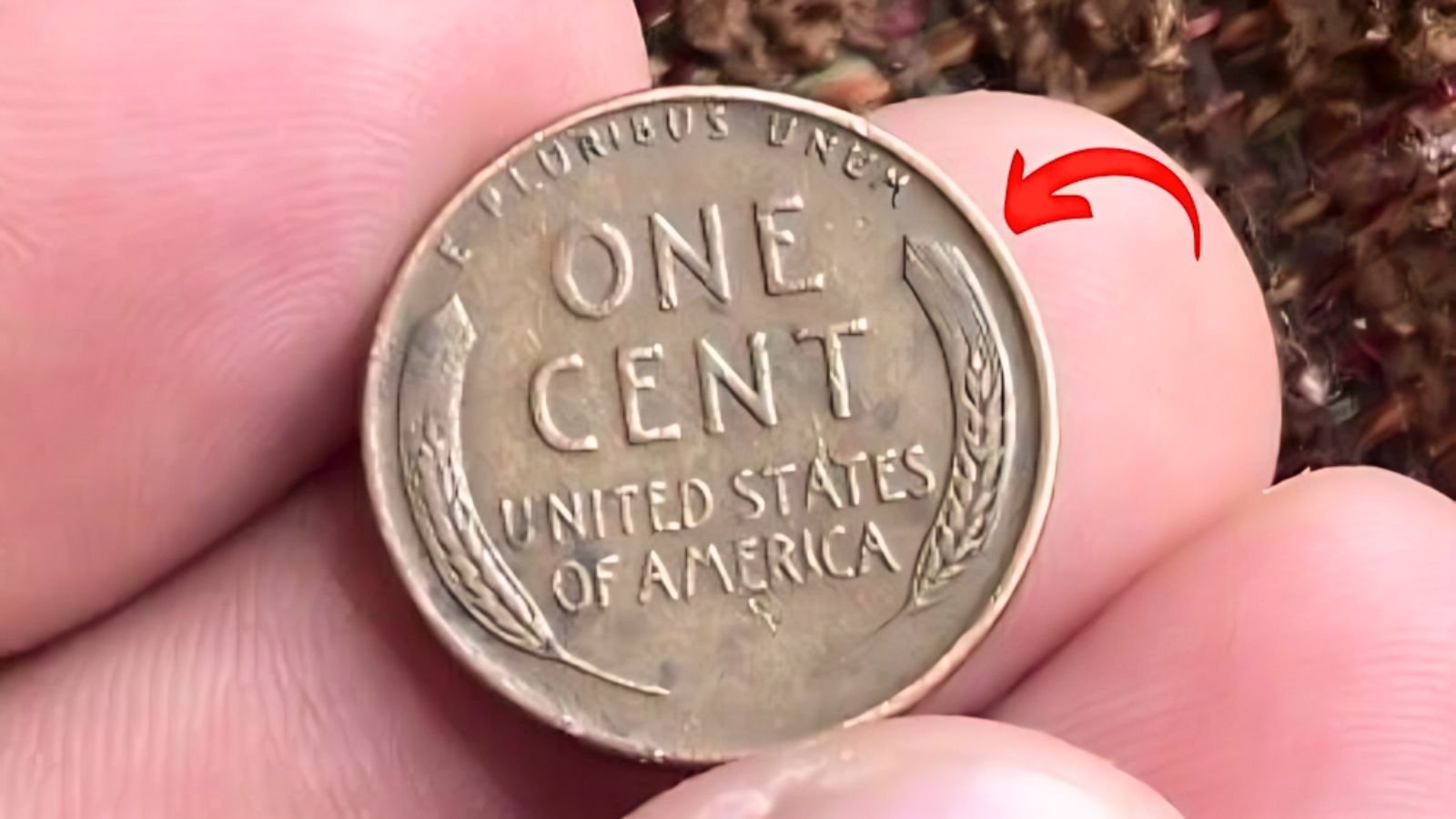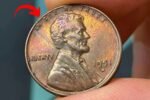When people think of coins that could be worth a fortune, quarters often come to mind thanks to the excitement surrounding rare Bicentennial varieties. However, there’s one lesser-known coin that has been making headlines for its jaw-dropping value—the Lincoln Wheat Penny. While it might appear to be an ordinary one-cent coin, the Lincoln Wheat Penny has risen to legendary status in the numismatic community. Notably, some examples have been valued in the tens of millions of dollars, with one particular Lincoln Wheat Penny reportedly worth a staggering $60 million.
This extraordinary valuation has stunned collectors and casual coin enthusiasts alike. But what exactly makes a humble penny reach such astronomical worth? It’s a mix of history, rarity, condition, and mystique that elevates certain Lincoln Wheat Pennies far above their face value. Let’s explore this coin’s fascinating background and why it’s captivating collectors worldwide.
This Jefferson Nickel Coin Was Sold for 3¢ at Yard Sale — Then Flipped for $40,000
The Origin of the Lincoln Wheat Penny
Introduced in 1909 to commemorate the 100th anniversary of Abraham Lincoln’s birth, the Lincoln Wheat Penny was the first U.S. coin to feature a real person’s portrait. Prior to this, U.S. coins primarily showcased symbolic images of Liberty. The decision to feature Lincoln marked a significant cultural shift in American coinage and solidified the penny’s place in both history and popular culture.
The coin’s reverse side featured two wheat stalks, giving it the nickname “Wheat Penny.” This design remained in use until 1958, when it was replaced by the Lincoln Memorial design. The Lincoln Wheat Penny was struck primarily in copper, although some experimental varieties and transitional errors were minted in steel or other compositions.
From the very beginning, the Lincoln Wheat Penny held sentimental and historical significance. It honored one of the most revered American presidents and became a widely circulated part of everyday life. But over the decades, a few extremely rare varieties of this coin have emerged—and they’re worth far more than a cent.
The $60 Million Lincoln Wheat Penny
Among all Lincoln Wheat Pennies ever minted, one stands apart—the ultra-rare 1943 bronze cent. During World War II, copper was a critical material needed for wartime manufacturing. As a result, the U.S. Mint began producing pennies in steel coated with zinc. However, a small number of bronze planchets from 1942 were accidentally left in the presses and struck with the 1943 date. These “error” coins were not supposed to exist, making them exceptionally rare.
Only a few of these 1943 bronze Lincoln Wheat Pennies are known to exist today, and one in near-perfect condition was reportedly sold in a private transaction for an astonishing $60 million. While this figure may seem unbelievable, it reflects not just the coin’s rarity, but also its near-mythical status among collectors. The coin’s pristine condition, combined with the wartime backstory and minting anomaly, contributes to its incredible valuation.
Why the Lincoln Wheat Penny is So Valuable
Several factors contribute to the Lincoln Wheat Penny’s skyrocketing worth in the collectors’ market:
1. Historical Significance
The Lincoln Wheat Penny represents a pivotal point in American history—commemorating Abraham Lincoln and released during an era of massive national change. This symbolic weight alone makes it attractive to collectors.
2. Minting Errors
Coins like the 1943 bronze Wheat Penny or the 1955 doubled-die variety are incredibly valuable because they were produced in error and escaped detection. These mistakes—whether caused by leftover planchets, misaligned dies, or double strikes—often result in coins that are one-of-a-kind or extremely limited.
3. Scarcity
Many Lincoln Wheat Pennies were minted in high quantities, but certain years and mint marks are incredibly scarce. For example, the 1909-S VDB penny (minted in San Francisco with designer Victor David Brenner’s initials) had a mintage of just 484,000. Today, well-preserved examples of this coin can sell for thousands—or more.
4. Condition
Coins graded as Mint State or Proof by professional numismatic services like PCGS or NGC are often worth significantly more. Even minor differences in condition—such as surface marks, luster, or strike quality—can have a major impact on a Lincoln Wheat Penny’s value.
5. Collector Demand
The Lincoln Wheat Penny is one of the most collected coins in American history. From schoolchildren just starting their coin collections to professional numismatists, virtually everyone who collects U.S. coins begins with Wheat Pennies. That high demand, especially for rare specimens, pushes prices upward.
Notable Lincoln Wheat Penny Varieties Worth a Fortune
Beyond the $60 million bronze penny, several other Lincoln Wheat Pennies have fetched remarkable prices:
● 1909-S VDB
This iconic coin is the holy grail for many collectors. Only a few hundred thousand were minted, and those in top condition can be worth tens of thousands of dollars.
● 1943 Copper (Bronze) Penny
As mentioned, this wartime error is one of the most valuable pennies in the world. Experts believe fewer than 20 exist.
● 1955 Doubled Die
This variety features noticeable doubling in the date and inscriptions. It was created when the coin die was struck twice with a slight misalignment. Well-preserved examples can easily exceed $10,000 in value.
● 1922 No D
Minted in Denver, this coin lacks the typical “D” mint mark due to a worn die. These are extremely rare and highly sought-after.
● 1914-D
Another low-mintage rarity, this penny can fetch thousands even in moderately worn condition.
A Historical Coin That Keeps Giving
It’s easy to think of coins as mundane objects—we handle them every day without much thought. But the Lincoln Wheat Penny shows that coins can be time capsules. They capture specific moments in American history, embody artistic and technological developments, and sometimes contain quirks or mistakes that make them priceless.
For coin collectors, the Lincoln Wheat Penny represents more than just potential financial gain. It’s about history, craftsmanship, and the thrill of discovery. The chance that a coin in your pocket or tucked away in an old jar might be worth a life-changing amount is what keeps the passion for numismatics alive.
What You Should Do With Old Pennies
If you’ve got a jar of old coins lying around, it’s time to give them a second look—especially if any of them are Lincoln Wheat Pennies. Start by organizing them by date and mint mark. Key dates to watch for include:
-
1909-S VDB
-
1914-D
-
1922 No D
-
1931-S
-
1943 Copper
-
1955 Doubled Die
Once sorted, check for signs of wear and anomalies like doubling or missing details. If you suspect a coin might be valuable, consider getting it graded by a professional. Companies like PCGS (Professional Coin Grading Service) or NGC (Numismatic Guaranty Company) can authenticate your coin and assign it a condition grade—crucial steps if you ever plan to sell.
The Coin That Keeps Collectors Dreaming
The Lincoln Wheat Penny continues to spark fascination across generations. Whether it’s the $60 million bronze example or a 1909-S VDB found in an attic, these coins hold deep historical and cultural value. They represent both the everyday and the extraordinary, living quietly in countless collections and drawers—until one is discovered to be a national treasure.
If there’s one lesson to take from the story of the Lincoln Wheat Penny, it’s this: never underestimate the value of what might be hiding in plain sight. With a little knowledge and a keen eye, anyone could uncover a coin that transforms from pocket change into a priceless artifact of American history.
Final Thoughts
The Lincoln Wheat Penny is more than just a piece of copper—it’s a testament to America’s past and a beacon for collectors worldwide. While not every penny will be worth millions, the thrill of searching for that one rare piece continues to captivate and inspire. Whether you’re a seasoned numismatist or just getting started, the Lincoln Wheat Penny serves as a perfect reminder that sometimes, the smallest things hold the greatest value.
Disclaimer: This article is intended for informational purposes only and should not be considered professional investment or financial advice. The estimated values mentioned reflect exceptional cases and are based on previous sales, expert evaluations, and market trends. Always consult a certified numismatic expert before making any coin purchases, sales, or appraisals. Proper authentication and grading are essential for determining the true value of any Lincoln Wheat Penny.
Some Important Link
| Telegram Group | Click Here |
| WhatsApp Group | Click Here |
| Home Page | Click Here |














